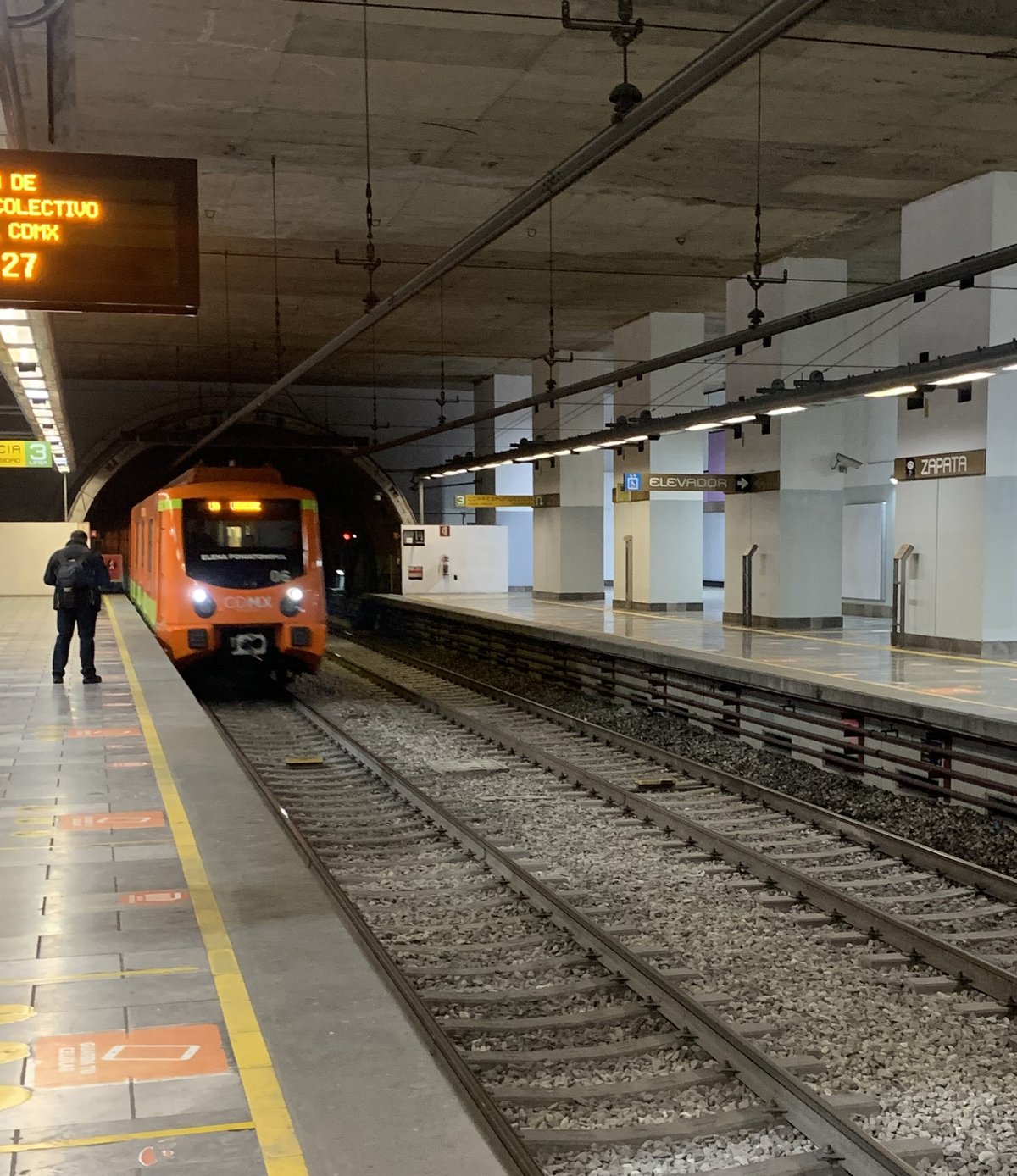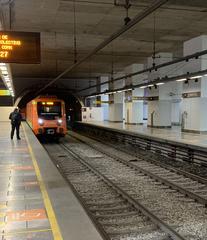
Zapata Mexico City Visiting Guide: History, Tickets, and Attractions
Date: 14/06/2025
Introduction
Mexico City offers visitors a profound journey into the legacy of Emiliano Zapata, one of Mexico’s most revered revolutionary figures. His fight for agrarian reform and social justice continues to shape Mexican society, resonating in everything from urban murals and public statues to community festivals and educational initiatives. This comprehensive guide explores the neighborhoods, historical sites, and cultural expressions dedicated to Zapata, providing detailed visitor information on hours, ticketing, accessibility, and travel tips. For seamless planning, consult resources like the Mexico City Tourism Board, and discover tours and events that bring Zapata’s revolutionary spirit to life (Wikipedia; Mexico Solidarity Project; AP News).
Table of Contents
- Origins and Naming of Colonia Emiliano Zapata
- Historical Development and Urbanization
- Emiliano Zapata: The Revolutionary Legacy
- Cultural Significance and Memory
- Visiting Colonia Emiliano Zapata: Essential Information
- Zapata Memorials and Historical Sites: Hours, Tickets, and Cultural Insights
- Visiting Zapata Metro Station and Nearby Attractions
- The Monument to Emiliano Zapata: Complete Guide
- Summary and Visitor Recommendations
- Sources and Further Reading
Origins and Naming of Colonia Emiliano Zapata
Colonia Emiliano Zapata, located in the Tláhuac borough, is a vibrant neighborhood named to honor Emiliano Zapata, reflecting Mexico’s tradition of commemorating its revolutionary heroes (Wikipedia). The area retains rural roots, with connections to surrounding agricultural lands (Mapcarta).
Historical Development and Urbanization
During the 20th century, rapid expansion transformed Tláhuac’s outskirts from rural landscapes into urban neighborhoods. Colonia Emiliano Zapata developed through migration, government housing programs, and ongoing land tenure struggles. Many residents descend from rural communities and uphold traditions of communal landholding, echoing Zapata’s vision (Mexico Solidarity Project).
Emiliano Zapata: The Revolutionary Legacy
Born in 1879 in Morelos, south of Mexico City, Emiliano Zapata became a leading figure of the Mexican Revolution. The 1911 Plan de Ayala, authored by Zapata, demanded land reform and the return of communal lands to peasants (Biographics). His rallying cry, “Tierra y Libertad” (“Land and Liberty”), continues to inspire social justice movements (Mexico Solidarity Project).
Cultural Significance and Memory
Zapata’s image is a symbol of resistance and social justice across Mexico. In 2019, the centenary of his assassination was marked by national commemorations, special postage stamps, and subway tickets featuring his likeness. President Andrés Manuel López Obrador declared 2019 the “Year of Zapata,” underscoring the ongoing relevance of land rights (AP News).
Visiting Colonia Emiliano Zapata: Essential Information
How to Get There
Access Colonia Emiliano Zapata via Metro Line 12 (nearest stations: [insert nearest stations]), as well as by bus or taxi. Parking is limited—public transit is recommended.
Visiting Hours and Entry
As a public neighborhood, Colonia Emiliano Zapata is open 24/7 with no entry fees. Visitors can freely explore its streets, murals, and community spaces celebrating Zapata’s legacy.
Guided Tours and Cultural Events
Local organizations offer walking tours that highlight the area’s history and culture. Nearby villages, including San Andrés Mixquic—famous for Day of the Dead festivities—often feature Zapata-related themes. Check local tourism resources for tour schedules.
Accessibility
The neighborhood is generally flat, though some streets may be uneven. Metro stations and main public areas are wheelchair accessible; visitors with mobility needs should plan ahead.
Nearby Attractions and Photographic Spots
Notable sites include the Teuhtli volcano and historic villages such as San Juan Ixtayopan and San Andrés Mixquic. The neighborhood’s murals and monuments are popular with photographers.
Zapata Memorials and Historical Sites: Hours, Tickets, and Cultural Insights
Zapata’s Legacy in Mexican Culture
Zapata is revered for championing agrarian reform and social justice. His leadership during the Mexican Revolution inspired rural communities to fight for land restitution. The Plan de Ayala (1911) became a symbol for disenfranchised Mexicans, and his vision of “Tierra y Libertad” continues to motivate contemporary movements, including the Zapatista Army of National Liberation (EZLN) (sjsu.edu; mexicohistorico.com).
Key Sites: Hours, Tickets, Accessibility
- Museo Nacional de la Revolución: Tue–Sun, 9:00 AM–5:00 PM; ~70 MXN admission; wheelchair accessible.
- Public Statues and Murals: Accessible year-round, free of charge.
- Palacio de Bellas Artes and Zócalo: Open for events and festivals; check schedules for ticketed activities.
Verify hours and prices on official websites before visiting.
Festivals and Commemorations
April 10th, the anniversary of Zapata’s assassination, features public ceremonies and cultural events at prominent venues like Palacio de Bellas Artes and the Zócalo (mexicocity.cdmx.gob.mx). The Festival Centro Histórico also highlights revolutionary themes (two.travel).
Zapata in Politics, Art, and Education
Zapata’s legacy continues in political activism, art, and education. His image is invoked in protests and community events. Schools, universities, and cultural centers regularly host lectures and exhibits on Zapata and the Revolution (sjsu.edu).
Neighborhoods and Sites Associated with Zapata
Though Zapata was born in Morelos, Mexico City neighborhoods such as Colonia Zapata and Avenida Emiliano Zapata frequently hold community events and display public art in his honor. Day trips to Anenecuilco (Zapata’s birthplace) and Cuautla offer deeper exploration (mexicotravelsecrets.com).
Practical Visitor Tips
- Plan ahead for festivals—events can be crowded.
- Take guided tours for deeper historical context.
- Engage with community events for authentic experiences.
- Use digital resources such as interactive maps and virtual tours for planning.
Visiting Zapata Metro Station and Nearby Attractions
Metro Station Murals and Art
Zapata Metro Station (Lines 3 & 12, Benito Juárez borough) is both a transport hub and a cultural site, with murals dedicated to Zapata. Open daily 5:00 AM–midnight; metro tickets cost 5 pesos. No extra fee to view the artworks (Curious Sparrow Travel).
Museums and Parks Nearby
- Parque de los Venados: Open 6:00 AM–8:00 PM, free entry.
- Museo Nacional de las Intervenciones: Tue–Sun, 9:00 AM–5:00 PM; ~70 MXN; official site.
Street Art Tours
Neighborhoods like Portales and Del Valle feature revolutionary murals. Guided street art tours (2–3 hours, 300–500 MXN) are available—book in advance for the best experience.
Coyoacán and Additional Sites
A short metro ride away, Coyoacán is known for:
- Frida Kahlo Museum: Tue–Sun, 10:00 AM–5:45 PM; tickets ~250 MXN (Official Site).
- Plaza Hidalgo & Jardín Centenario: Open public spaces with no admission fees.
Other notable sites:
- Museo Nacional de Antropología: Tue–Sun, 9:00 AM–7:00 PM; ~85 MXN (Official Website).
- Zócalo & Historic Center: Templo Mayor (~85 MXN), Palacio Nacional (free, ID required), Catedral Metropolitana (free).
Food, Markets, and Day Trips
- Mercado de Coyoacán and Mercado de la Merced: Open 8:00 AM–7:00 PM.
- Day Trips: Tepotzotlán (colonial town), Teotihuacán (ancient pyramids; open 9:00 AM–5:00 PM, ~80 MXN).
Visitor FAQs and Practical Tips
- Metro tickets: 5 pesos; use a rechargeable Metro Card.
- Safety: Stick to tourist-friendly areas like Zapata, Coyoacán, Roma, and Condesa.
- Accommodation: Book hotels/hostels in safe neighborhoods; read recent reviews.
- Altitude: Mexico City is at 2,240m; stay hydrated and acclimate.
- Budget: Daily costs can be as low as €30 with affordable food and tickets.
- Festivals: Day of the Dead (early November) is a highlight.
Visiting the Monument to Emiliano Zapata: Complete Guide
History and Cultural Significance
The Monument to Emiliano Zapata anchors the Zapata neighborhood and stands as a powerful tribute to his revolutionary ideals. Created by renowned sculptors, the monument features Zapata on horseback, surrounded by murals and plaques that narrate the revolutionary struggle.
Visiting Information
Location: Zapata neighborhood, near Zapata Metro Station (Lines 3 & 12).
Getting There: Easily accessible by Metro, Uber, or taxi from central Mexico City or the airport.
Visiting Hours and Admission:
- The monument is open 24/7 as an outdoor public space—no admission fee.
- Guided tours may have set hours and costs; check with providers for details.
Guided Tours:
- Local tours often include the monument, nearby museums, and historic sites. English-speaking guides are available; book ahead for best options.
Accessibility, Safety, and Photography
- Accessibility: The monument is wheelchair accessible with paved paths.
- Safety: The area is generally safe during daylight; use standard city precautions.
- Photography: Early mornings or late afternoons offer the best light.
Nearby Attractions
- Museo Casa de la Memoria Indómita: Focuses on social movements.
- Local Markets: Offer crafts and regional foods.
Visitor FAQs
Q: Is there an entrance fee?
A: No, the monument is free and open to the public.
Q: Best times to visit?
A: Early mornings and late afternoons during weekdays for fewer crowds.
Q: Are tours in English available?
A: Yes, many operators offer English-speaking guides.
Q: Is the site accessible for people with disabilities?
A: Yes, there are paved, wheelchair-friendly paths.
Q: Can I combine the visit with other sites?
A: Yes, combine with local museums or the city center for a comprehensive historical experience.
Summary and Visitor Recommendations
Exploring Zapata’s legacy in Mexico City reveals a vibrant interplay of history, culture, and ongoing activism. From the open-air Monument to Emiliano Zapata and the murals at Zapata Metro Station to the Museo Nacional de la Revolución and community festivals, each site offers insights into Zapata’s enduring impact. Enhance your visit by joining guided tours, attending commemorative events (notably around April 10th), and exploring cultural hubs like Coyoacán. Use public transit, book tickets in advance for popular sites, and utilize digital resources for seamless travel. Stay connected by downloading the Audiala app and following Mexico City’s cultural channels—walk in the footsteps of a revolutionary hero and witness the spirit of Zapata alive in today’s Mexico (MexicoHistorico.com; Curious Sparrow Travel).
Sources and Further Reading
- Wikipedia: List of neighborhoods in Mexico City
- Mexico Solidarity Project
- Biographics: Emiliano Zapata
- AP News: Year of Zapata
- sjsu.edu: Emiliano Zapata and Agrarian Reform
- mexicohistorico.com: The Role of Emiliano Zapata in the Mexican Revolution
- mexicotravelsecrets.com: Mexico City Travel Tips
- mexicocity.cdmx.gob.mx: Calendar of Tourism and Cultural Activities 2025
- two.travel: Mexico City Events 2025
- Curious Sparrow Travel: Mexico City Travel Guide
- Museo Nacional de las Intervenciones Official Site
- Frida Kahlo Museum Official Site
- Museo Nacional de Antropología Official Website











































































































































































